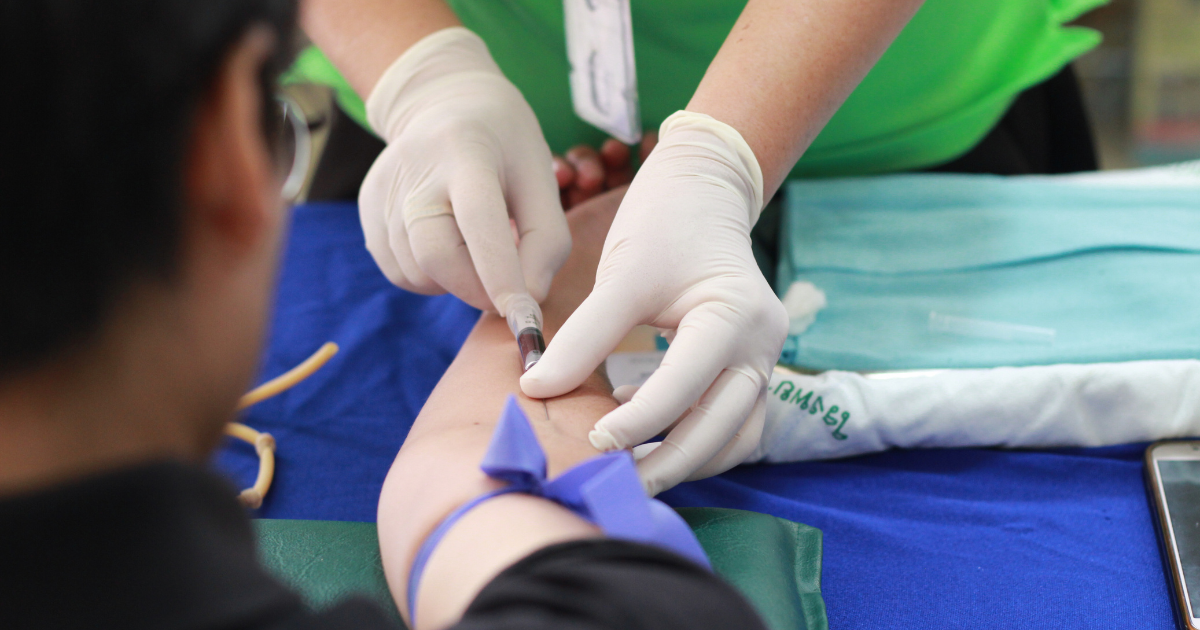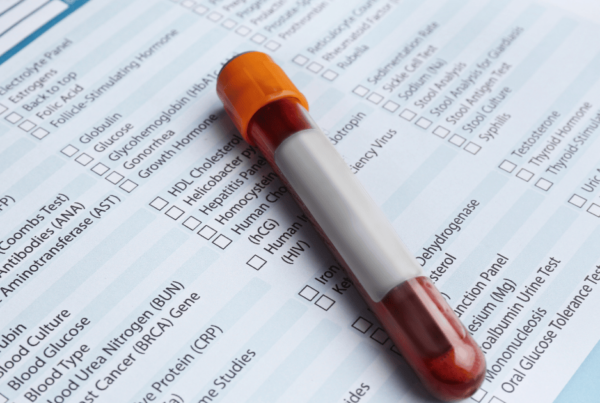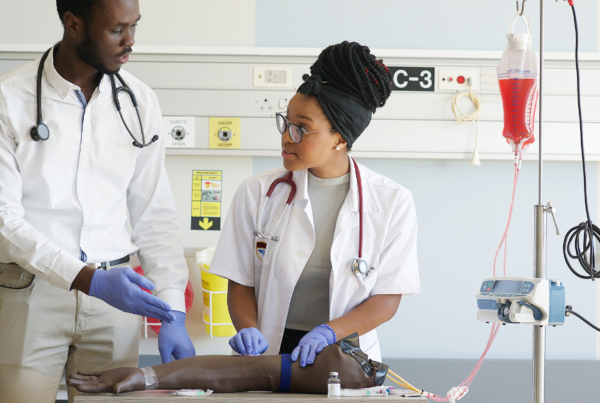Getting blood drawn is a routine medical procedure that can cause anxiety for many people. The question “does getting blood drawn hurt?” is typical among patients who may be concerned about the procedure. This article aims to provide reassurance, practical tips, and a clear understanding of what to expect during a blood draw. The target audience includes individuals who are anxious or concerned about blood draws, and the tone of voice is reassuring and professional.
| Key Takeaways: Does getting blood drawn hurt? |
| Does getting blood drawn hurt? While there may be a brief pinch, the discomfort is usually minimal and short-lived. |
| Preparation and relaxation are key to reducing anxiety and pain. |
| Communicate with your healthcare provider to ensure the best experience. |
| Stay hydrated to make the blood draw process smoother. |
Understanding the Blood Draw Process
What is a Blood Draw?
A blood draw, also known as venipuncture, involves inserting a needle into a vein to collect a blood sample. This procedure is performed by trained professionals such as phlebotomists or nurses and is essential for various medical tests and diagnosis. The process is generally quick and straightforward, but understanding it can help alleviate some of the anxiety associated with it.
How Blood is Drawn
- Preparation: The site where the blood will be drawn is cleaned with an alcohol swab to remove germs. This step is critical for preventing infections.
- Tourniquet Application: A tourniquet is tied around the upper arm to increase blood flow to the vein, making it easier to locate.
- Needle Insertion: A needle attached to a vial is gently inserted into the vein, and blood is collected. This part of the procedure usually lasts just a few seconds.
- Completion: The needle is removed, pressure is applied to the site, and a bandage is placed over the puncture site. This helps to stop any bleeding and prevents bruising.
Does Getting Blood Drawn Hurt?
The Sensation
“Does getting blood drawn hurt?” is a common concern. The sensation typically involves a brief pinch or sting when the needle is inserted. For most people, this discomfort is minimal and short-lived. However, individual experiences can differ depending on a variety of factors.
Factors Influencing Pain Perception
- Pain Tolerance: Everyone’s pain tolerance varies. What may be a minor pinch for one person could be more uncomfortable for another.
- Needle Size: Smaller needles used for drawing blood cause less discomfort.
- Phlebotomist’s Skill: An experienced phlebotomist can perform the procedure quickly and efficiently, reducing discomfort.
- Anxiety Levels: Anxiety can heighten the perception of pain. Staying calm can help reduce this sensation.
10 Tips to Make Getting Blood Drawn Painless
1. Breathe
Don’t hold your breath while blood is drawn. Some people hold their breath in anticipation of the needle insertion, which can increase feelings of faintness. Breathe normally to reduce the likelihood of feeling lightheaded. Deep breathing exercises before and during the procedure can also help calm your nerves and minimize discomfort.
2. Be Honest
If you have fainted in the past when having blood drawn, inform the phlebotomist. Proper positioning is crucial to prevent falls. You might be positioned in a low chair or on a cushion near the floor to minimize the risk. Being upfront about your previous experiences allows the healthcare professional to take necessary precautions to ensure your safety and comfort.
3. Don’t Watch
If the sight of blood makes you queasy, avoid watching the procedure. Look away, read a magazine, or focus on a distraction like listening to music. This can help reduce anxiety and discomfort. Some people find that visual distractions, such as looking at posters on the wall or watching a video on their phone, can be particularly effective in diverting their attention from the procedure.
4. Request a Different Technician
If the person drawing your blood isn’t successful after two tries, it’s reasonable to ask for another phlebotomist. Don’t allow repeated attempts by someone struggling to find a vein. Request the most experienced professional available. It’s your right to ask for someone else if you’re uncomfortable, and doing so can prevent unnecessary pain and bruising.
5. Ask for a Smaller Needle
A smaller needle, known as a butterfly needle, can be used for difficult or small veins. It’s perfectly acceptable to ask for a smaller needle if you have had issues with blood draws in the past. Butterfly needles are particularly useful for children and adults with small or fragile veins. They can make the procedure less painful and reduce the risk of complications.
6. Be Still
Moving or wiggling during the blood draw can make the process more difficult and increase discomfort. Sit still to help the phlebotomist perform the procedure smoothly and efficiently. If you’re feeling anxious and find it hard to stay still, try focusing on a specific point in the room or practicing deep breathing to keep calm and reduce movement.
7. Ask for Numbing Medication
Numbing medication can be applied to the skin a few minutes before the procedure. This is especially useful for those who find blood draws very painful. The medication is safe and often used for young patients but is available for adults as well. Topical anesthetics can significantly reduce the pain of needle insertion, making the experience more comfortable.
8. Hydrate Well
Well-hydrated veins are plumper and easier to access. Drink plenty of fluids before your blood draw unless instructed otherwise. Start hydrating a day or two before your appointment and continue until the blood draws. Avoid alcohol and coffee, which can dehydrate you. Hydration makes the veins more prominent and easier to locate, which can make the procedure quicker and less painful.
9. Use Warm Compresses
Applying a warm compress to your arm before the blood draw can help dilate your veins, making them easier to find and reducing discomfort. You can do this at home before heading to your appointment or ask the phlebotomist to provide one. Warmth causes the blood vessels to expand, improving blood flow and making the veins more accessible.
10. Bring a Companion
Having a friend or family member with you can provide emotional support and help distract you during the procedure. Their presence can make you feel more at ease and reduce anxiety. A supportive companion can engage you in conversation, help keep you relaxed, and provide reassurance throughout the process.
Improve Your Veins for a Blood Draw
Stay Hydrated
Well-hydrated veins are plumper and easier to access. Drink plenty of fluids before your blood draw unless instructed otherwise. Start hydrating a day or two before your appointment and continue until the blood draws. Because they can cause dehydration, stay away from caffeine and alcohol. Consistent hydration helps maintain optimal blood volume and vein health, facilitating an easier blood draw.
Warm Compresses
Applying a warm compress to the area can help dilate the veins and make them easier to locate. This can be especially helpful if you have smaller or harder-to-find veins. Use a warm, damp cloth or a heating pad for a few minutes before the blood draw to improve vein visibility and accessibility.
FAQs About Blood Draws
Does getting blood drawn hurt more for children?
Children may find blood draws more uncomfortable due to heightened sensitivity and anxiety. Healthcare professionals trained in pediatric care use techniques to minimize discomfort. These may include distraction methods, using smaller needles, and applying numbing creams to reduce pain and anxiety.
How can I reduce my fear of blood draws?
Preparation and relaxation techniques can significantly reduce fear. Bringing a friend or using numbing creams can also help. Additionally, practicing deep breathing, visualization, and positive thinking can reduce anxiety. Talking to the healthcare provider about your concerns can also help as they may offer additional support and reassurance.
Are there any alternatives to blood draws?
Some tests can use other methods like urine samples or finger pricks, but many diagnoses rely on venipuncture for accurate results. If you have specific concerns or conditions that make blood draws difficult, discuss alternative testing methods with your healthcare provider.
What if my veins are hard to find?
Informing your phlebotomist about past difficulties can help. They may use a warm compress or ask you to make a fist to make veins more prominent. In some cases, they may use ultrasound guidance to locate veins that are difficult to find, ensuring a more successful and less painful draw.
Can blood draws cause long-term damage?
When performed correctly, blood draws are safe and do not cause long-term damage. Any bruising or soreness typically resolves quickly. If you experience persistent pain, swelling, or other complications, contact your healthcare provider for further evaluation and treatment.
What should I do if I feel faint during a blood draw?
If you feel faint while having your blood drawn, notify the phlebotomist right away. They can take steps to help, such as having you lie down or lower your head between your knees. Staying hydrated and eating a light snack before the procedure (unless fasting is required) can also help prevent fainting.
Is it normal to bruise after a blood draw?
Minor bruising is common and usually resolves within a few days. To minimize bruising, avoid strenuous activities with the arm used for the blood draw for 24 hours and apply gentle pressure to the site immediately after the draw. If the bruising is severe or accompanied by significant pain or swelling, contact your healthcare provider.
Conclusion
Understanding the process and taking proactive steps can significantly reduce the discomfort and anxiety associated with blood draws. By following the tips provided, you can make your next blood draw easier, faster, and pain-free. Always consult with healthcare professionals if you have specific concerns or conditions that may affect your experience.
Blood draws are an essential part of medical diagnostics and should not be a source of undue stress. With proper preparation, communication, and relaxation techniques, you can navigate this common procedure with confidence and minimal discomfort. Remember, the healthcare team is there to ensure your comfort and well-being, so don’t hesitate to voice your concerns and ask for the support you need.
Take the Next Step with Phlebotomy Now School
Are you seeking a job that will allow you to make an impact? Phlebotomy Now School offers comprehensive training programs to equip you with the skills to excel as a phlebotomist.
Our experienced instructors and hands-on training ensure you’re prepared to provide the best patient care. Join us today and start your journey towards a rewarding career in healthcare.
Contact us to learn more and register for our next classes!







